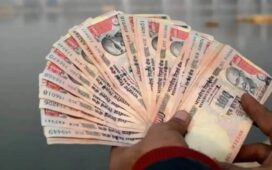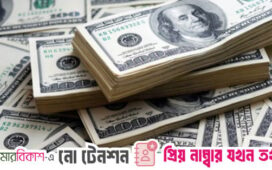The Delhi-based media professional paid for the merchandise with her Indian bank account’s international debit card, which offers four reward points for every Rs.200 spent overseas. Her expenditure of £186 should ideally have cost less than Rs.24,000, as £1 is usually equal to Rs.115-120, but Singh had to shell out over Rs.25,000 on account of her card’s foreign currency markup fee for international transactions.
For overseas travellers, such leakages add to the already high costs. The past few years have seen the Indian rupee hover near historic lows against not just the US dollar, but also other legal tenders such as the Singapore dollar, Britain’s sterling, and the Euro.
This makes overseas spending an expensive affair for most Indians. The trend is reflected in the Reserve Bank of India’s data, according to which Indian residents’ overseas expenditure under the Liberalised Remittance Scheme has been on the decline since 2023-24, when it hit a record $31.7 billion.
Save the markup
However, the financial services industry has been floating products or incentives that nudge Indians to loosen their purse strings abroad—zero-forex credit and debit cards, and attractive cashback on overseas spending, among other offers.

Manas Batra,37
Banker
Recent usage
Family vacation in Vietnam, spent Rs.1.5-2 lakh
Card
Scapia Federal Bank credit card
Joining/annual fee
Nil
Lounge benefit
Unlimited access at domestic airports (on Rs.10,000/month spends for Visa, Rs.15,000/month for RuPay)
Rewards system
5 coins worth Rs.1; each coin earned at 1:5 ratio for every rupee spent on travel bookings via Scapia app and 1:10 other transactions across merchants in India
Normally, cards charge a markup of 3.5% when you make a foreign transaction, with premium cards sometimes levying a lower fee. When a card is ‘zero forex’, you only pay the actual exchange rate plus the small commission charged by the card issuing company and nothing more.
“So, if something costs $1 and the exchange rate is Rs.89 plus Rs.0.5 in network commission, you’ll be charged Rs.89.5, not more,” explains Kashif Ansari, Assistant Professor-Finance at O.P. Jindal Global University.
Private lenders like RBL Bank and IDFC First Bank have their own zero-forex products, namely the World Safari and WOW credit cards, since 2020 and 2021, respectively.
Fintech Scapia joined hands earlier this year with Federal Bank for its zero-forex credit card. Its rival Niyo launched two such debit cards, through partnerships each with DCB Bank this year and SBM Bank India in 2021; the company also offers a zero-forex credit card through its tie-up with the latter.
Hassle-free overseas travel
These products have found many takers, including Manas Batra, a banking professional for more than 15 years. Having worked for leading private lenders, including Axis Bank and ICICI Bank, Batra had been using bank-issued travel cards that came with minimal markup fees and employee discounts for his overseas visits.
However, for a recent 9-day family trip to Vietnam, the 37-year-old put the Rs.1.5-2 lakh holiday expenses on a Scapia card. “I was initially recommended for this card by a friend who has been using it for a while, but for some reason, I was rejected. I asked him to recommend my wife, who luckily got through. I have used prepaid travel cards before, but I like the Scapia card because of its zero forex markup,” says Batra.
As for domestic reward points, Scapia cardholders earn coins—five of which are worth `1—at the ratio of 1:5 for travel bookings via its app and 1:10 other transactions across merchants in India. It also offers unlimited domestic airport lounge access, for Rs.10,000 spent on your Visa or Rs.15,000 on your RuPay card each month.
In the zero-forex category, credit cards are more beneficial for issuing companies than debit cards—the latter can be used only after loading some amount in Indian rupees with the concerned bank/financial institution.
Sumanta Mandal, founder of financial products analysis platform TechnoFino, advocates using credit cards instead because of their strong chargeback system. “If there’s any fraud, you can inform your issuer within three days, and they’ll recover the amount through chargeback,” he explains.
Cautious spenders like Nishant Kapoor, however, prefer the top-up mechanism of debit cards. During a work trip this year to Singapore, his employer provided him an American Express Green credit card for all official expenses. Once he was done with work, he used his DCB Niyo debit card for play. This card took care of his visit to a theme park as well as other spends, totalling a little over Rs.30,000.
“I had to open an account with DCB Bank, but I preferred the card’s features, such as the app that let me keep proper track of my rupee expenditure with respect to the Singapore dollar exchange rate,” says the 32-year-old consultancy professional.
Niyo’s domestic reward points, also coins, are earned at a 1:10 ratio for every point of sale or e-commerce transaction, with 10 coins equal to Rs.1. For up to three international ATM withdrawals in a quarter on Niyo’s SBM cards, the withdrawal fee is credited back as Niyo coins within 60 days of the transaction. With the DCB card, it is limited to one withdrawal.
Kapoor says Niyo is a far cry from Thomas Cook, whose prepaid forex cards he had used for vacationing earlier with his wife. He first bought one for their trip to Indonesia and loaded it with US dollars equivalent to Rs.50,000-60,000. For their subsequent vacation to Thailand, he bought another card from the company and loaded with the same amount but in Thai baht.
“Though I made a lot of bookings in advance, I had to use this card multiple times at various places. On one occasion, I had to reload it with around Rs.10,000, for which I had to email them,” he explained. “I also wasn’t satisfied with the app accompanying the card for tracking expenses.”
Mandal points out that prepaid forex cards come with their fair share of merits and demerits. “The advantage is that you can lock in the exchange rate when you load the card. For example, if the rate is Rs.88 per US dollar today and later rises to Rs.100, your money is already secured at Rs.88.”
“However, you have to preload your money, meaning those funds get blocked. If you face a sudden emergency, you can’t access them immediately. If you want to encash or unload the remaining amount, it takes around 3-5 days. Forex cards also come with loading fees and issuance or annual charges. For example, if you load $100, you might pay Rs.100-200 extra as a loading fee,” he elaborates.

Nishant Kapoor, 32
Management consultant
Recent usage
Business trip to Singapore, spent over Rs.30,000
Card
DCB Bank Niyo debit card
Joining/annual fee
Nil
Lounge benefit
One international airport access pass (on quarterly international spends of Rs.50,000)
Rewards system
10 coins worth Rs.1; each coin earned at 1:10 ratio for every rupee spent on point of sale or e-commerce transaction
Zero forex many not necessarily be the category of cards to maximise your savings, though. According to Ansari, a typical credit card might charge 1-3.5% as forex markup but also offer 5-10% cashback or equivalent in points.
“So, even after paying the markup, you might still come out ahead. Some cards give accelerated rewards on foreign spends. For example, the Axis Olympus card offers around 8% rewards, though it’s not zero forex—it charges 1.8% plus Goods and Services Tax (GST) as markup which turns out of be around 2%. So, you still get a net benefit of around 6%. There’s also the the Equitas Bank PowerMiles card that gives around 7%,” he explains.
However, most cards that offer such attractive benefits are in the premium category and come with a hefty annual fee. For example, Axis Olympus card has an annual fee of Rs.20,000 as well as GST. So, if you can justify the fees with adequate spends, a credit card might work the best. However, if you don’t use credit cards that frequently, a forex card may work better.
Withdrawals still charged
Amid this information overload about cards, one may recollect the adage ‘cash is king’. It holds true in nations where digital payments are not ubiquitous, but having to withdraw cash using your travel/forex card is an inconvenience.
None of the card categories offer no-cost overseas ATM withdrawals, with most travel/forex cards levying a 3-3.5% charge. Zero-forex cards fare slightly better—Scapia has a 2.5% fee, while Niyo charges Rs.425 plus GST beyond the free withdrawal limits in each of its cards.
Regulatory impetus for zero-forex cards is still nascent, given that not enough products have entered the market and the ones in circulation are yet to capture any major share of the travel card market, which is dominated mostly by leading private lenders.
Yet, Ansari believes they are the next big thing. “I think prepaid forex cards will lose relevance as people become more aware. Credit cards like Scapia, Jupiter, Fi, and Neo offer better convenience and value. Even premium cards like Axis Olympus or RBL World Safari—though not zeroforex— can offer better rewards and features. As customers understand this, the prepaid card business, like that of Thomas Cook and similar players, will likely see reduced demand,” he adds.
If you travel abroad frequently in a year, a zero-forex or high-reward credit card can trim costs. But for one-off vacations, a simple prepaid forex card still works; just watch out for loading fees and withdrawal charges.





